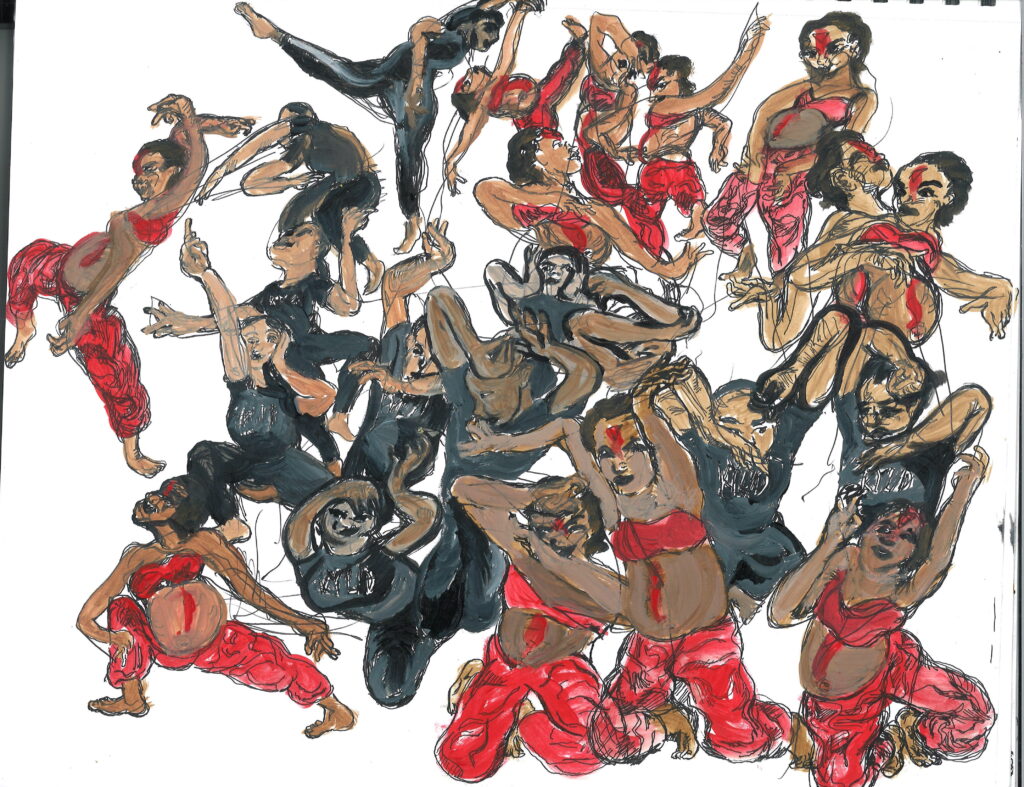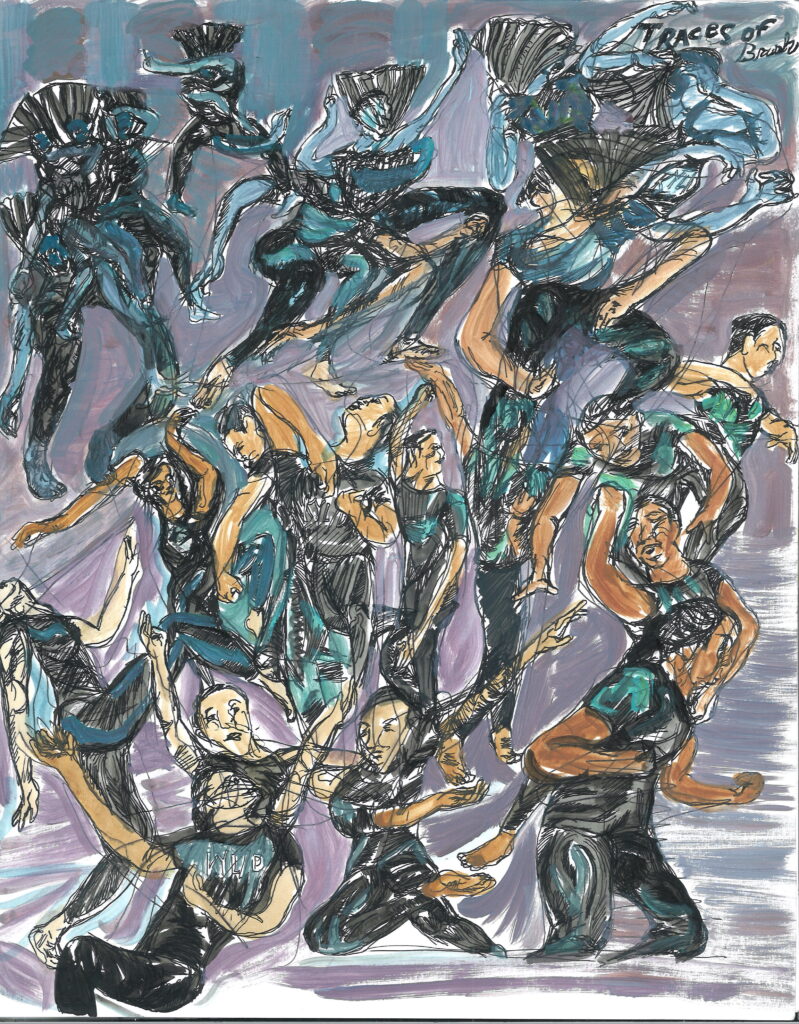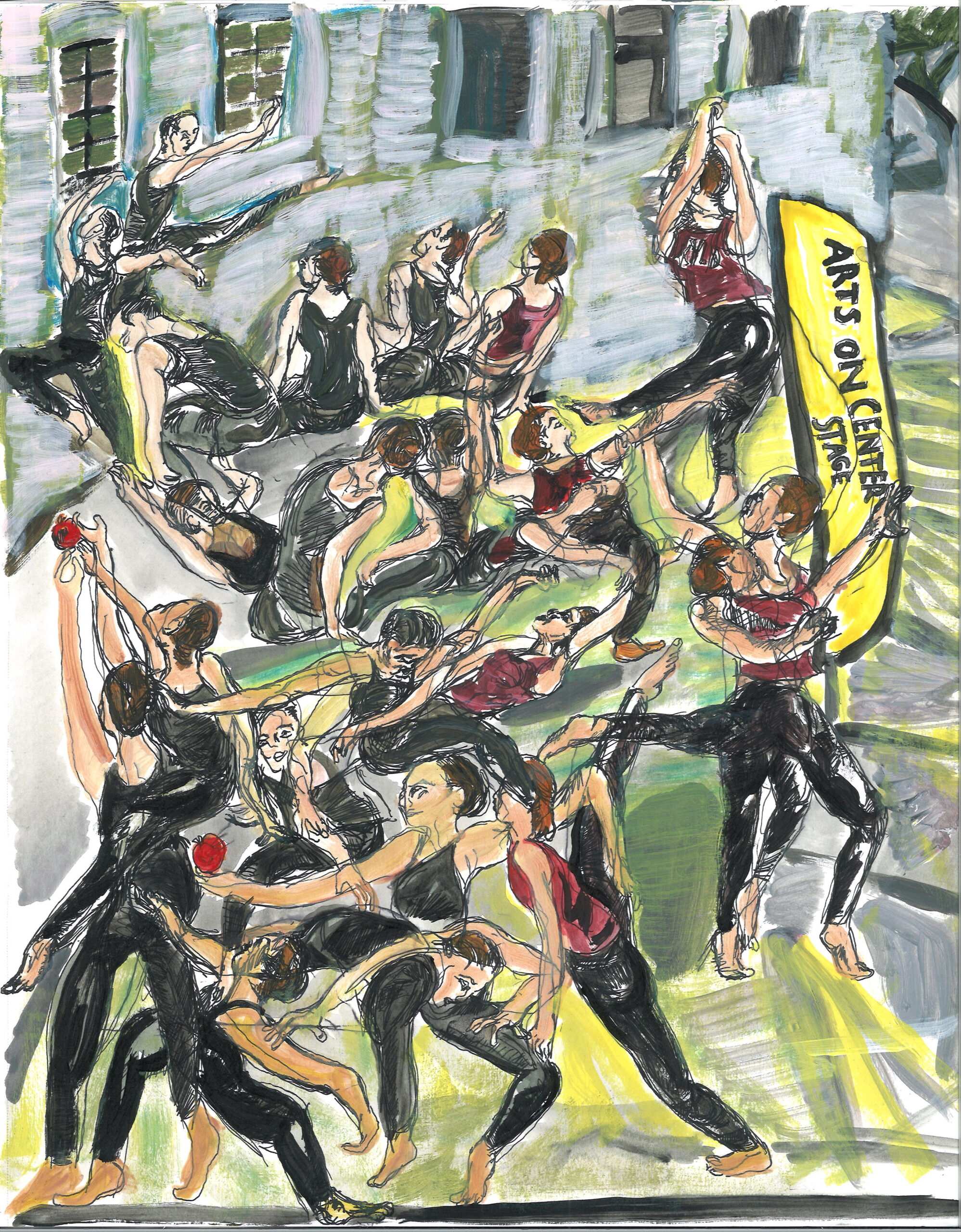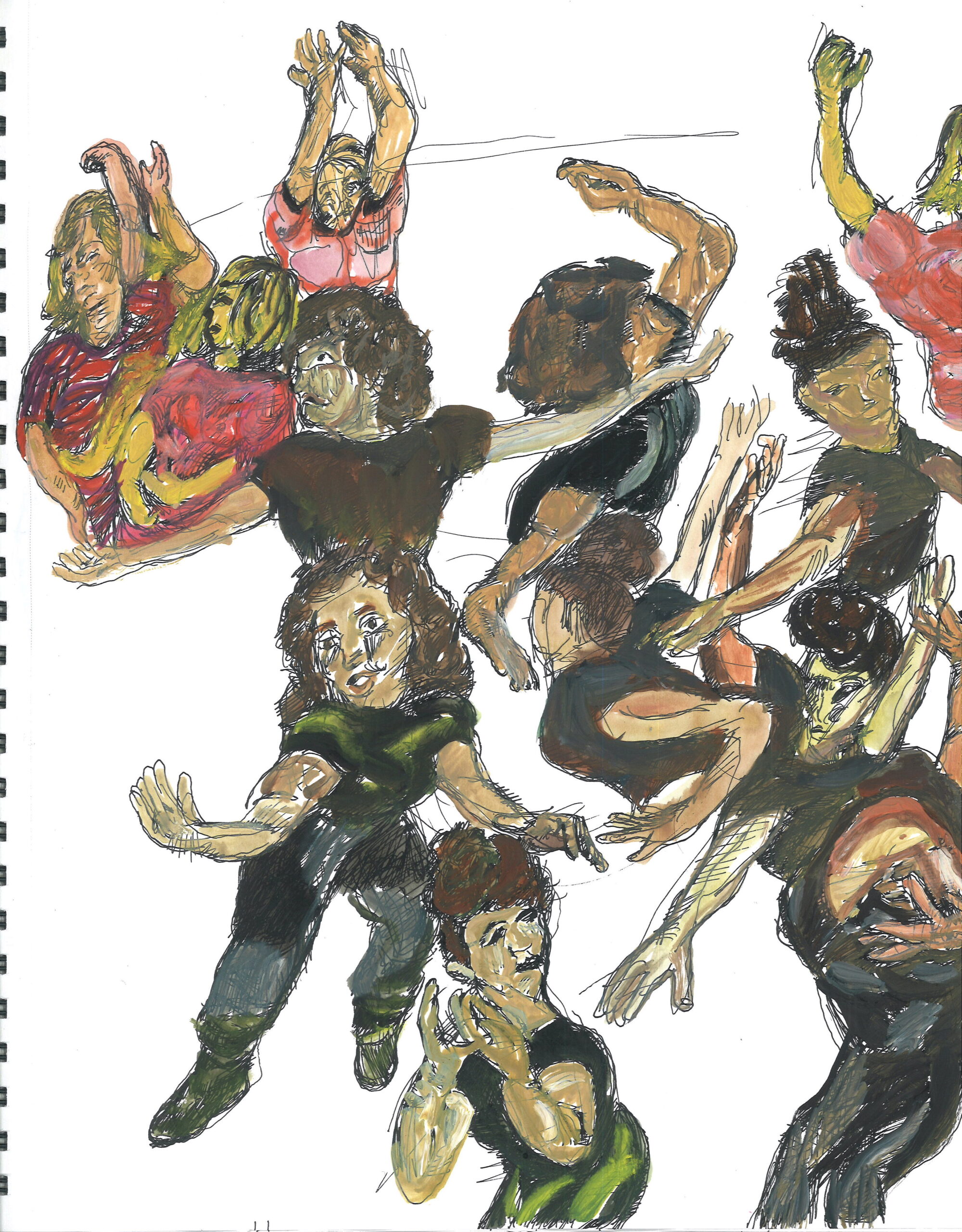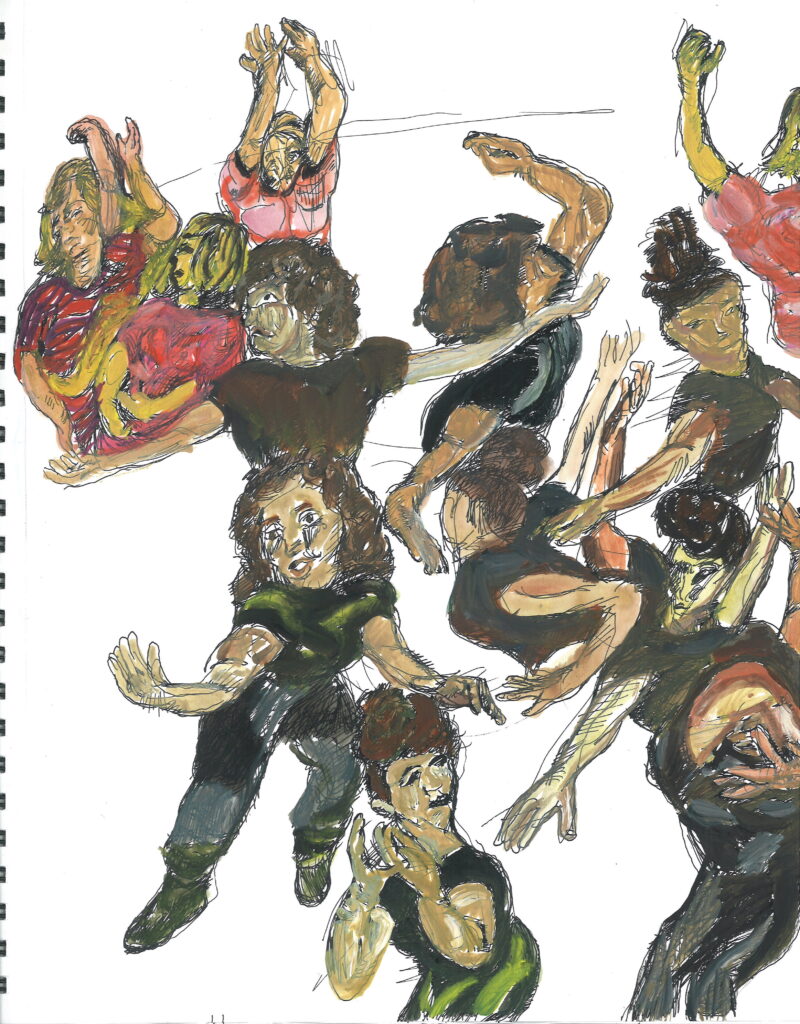



















The movement in Dance Theater is very influential, and primarily the movement is drawn in hope of capturing many moments that connects themes from the program to an evening length intervention. In many of these productions by dance artists there is a sense of fusion. Technique comes from their experience because when we think of how they work as choreographers, what we get is a methodology, ideology, and attributed to the way they see bodies move tests these capabilities for reception with an audience. Where the movement transfers a significant playing field, a large part of that experience signifies day-to-day motion, and through themes, these motions are explored for purposes of making improvised movement. Thus, making modern dance a timely, and especially contemporary art form that comes to fruition through movement and collaboration. Dance is highly emotive, and we ask the dancers to embody an art form, as it is meant to be seen. By following the dance artists work through the choreography to it’s means to an end, means something different for every dancer, and every audience. Two dance companies in Philadelphia, which have very different philosophies to draw from, given their choreography is a chance to draw a connection from their vision to their experience, and chart where we, as a city (Philadelphia,) as a people (how we relate to one another,) and place in time (period of art.) correlate with the rest of world.
In 2017, I was invited to visit the dance studio before the performance of INNER SUN by The Koresh Dance Company. The formality of drawing rehearsals was very new at the time. I was excited to become familiar with the forms and movement to expect a new relationship to the music, and space.
The Koresh Dance Company inspired a movement across dance and stage design, and looking back its perspective informed the concept of, choreographer as artistic director. The movement on stage can be very emotional, as the dancers grow in unison into a transformative body, with many faces, turning, and its repetitions become mesmerizing. In rehearsal, we can use more peripherally the same key motions that will transpire on stage, and shifting slightly over body parts for discovery into the movement. From picking out these forms from rehearsal, the company animates this sensory image in this abstraction of energetic, anatomical, and metamorphosis of form that serves the choreograher’s vision into a common theme.
The examples from rehearsals of INNER SUN, (left) shows Roni and John Levis introducing their world premiere back in 2017. These movement artists are working with communities which exemplify the core values of collaboration, and a greater impact on the art world.
Questioning the art form by exploring dance in film by Kyle Abraham and the NYCBallet & theaters around the world.

Kyle Abraham choreography for NYC Ballet 2021, “When We Fell.” Co-directed by Ryan Marie Helfant.
During This Time… NYCB created a bubble for its dancers at Kaatsban Cultural Park, Trivoli, New York. Where they prepared for the world premiere dance on film at David H. Koch Theater and promenade at Lincoln Center. The black and white film trajectory captured architecture, a climate (snowfall), temperatures with bodies heating up. Like particles in a microscope, elements being changed, brought minimalism to life on spectrum of scale and shape. During this time, theaters we dark and public gatherings were banned by surgeon general as a health risk of spreading Covid-19.
As a result, I really believe we were able to create something original that we could not have done without the other.”
Ryan Marie Helfant
Eye On Dance was a televised interview conducted by Celia Ipiotis, and Mark Bush. In 1976, the work of art in reaching the dancers with the public in mind to advance arts and culture brought these artists together. Now working under the Non-Profit Arts Resources for Collaboration (ARC).


